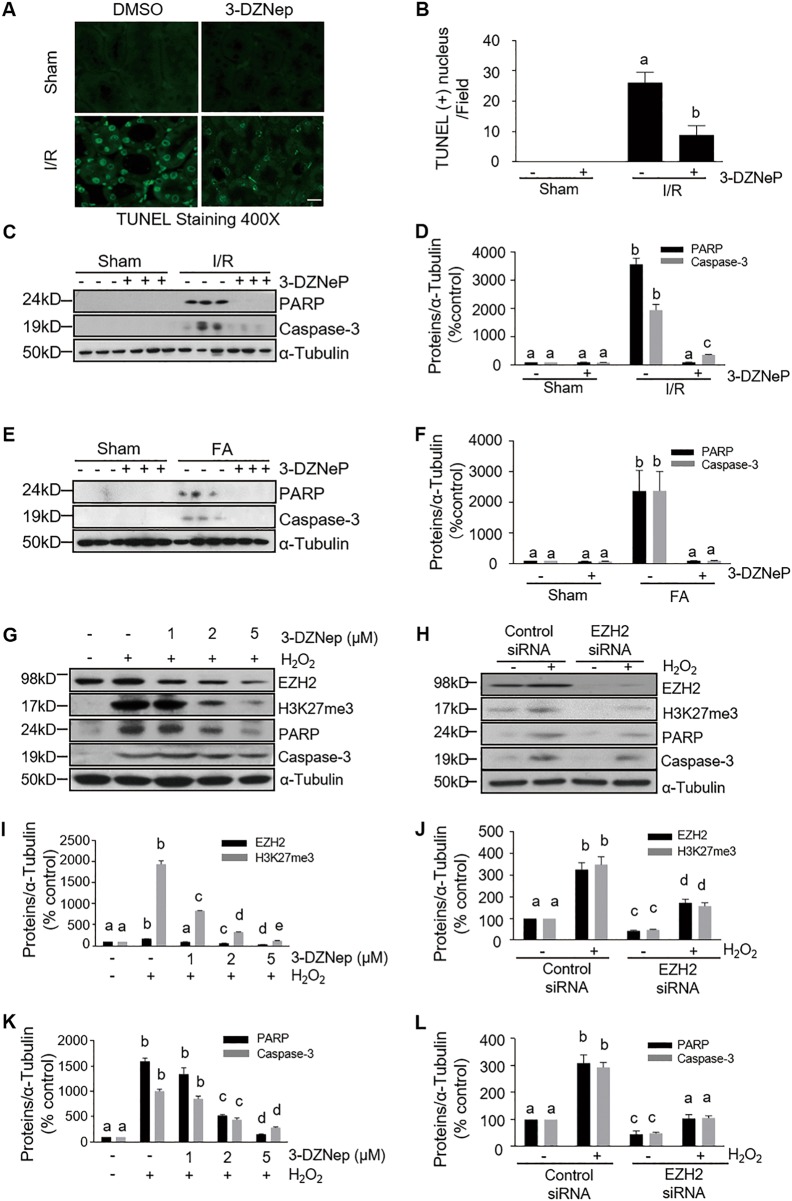Fig. 4. EZH2 inhibition attenuates renal tubular cell apoptosis in the kidney of IR-induced or FA-induced AKI and protects against apoptosis in H2O2-injured TKPT.
a Photomicrographs illustrate TdT-mediated dUTP nick-end labeling (TUNEL) staining of the kidney tissues collected at 48 h after sham and IR injuring with or without 3-DZNep administration in C57/black mice. Scale bar, 20 µm. b Positive TUNEL staining cell nuclei were counted in 10 high-power fields and expressed as means ± SD. c, e Kidneys were injured by IR or FA, respectively, and tissue lysates were subjected to immunoblot analysis with specific antibodies against cleaved PARP (24 kDa), cleaved caspase-3 (17 kDa), and ɑ-tubulin. d, f Expression levels of cleaved PARP and cleaved caspase-3 were quantified by densitometry and normalized with ɑ-tubulin, respectively. Data are means ± SD. Representative immunoblots are three samples in each group. Cultured TKPT were pretreated with various concentration of 3-DZNep (1–5 μM) for 1 h (g, i, k) or transfected with control or EZH2 siRNA for 24 h (h, j, l) and then exposed to 0.5 mM H2O2 for an additional 12 h. Immunoblot analysis were conducted with specific antibodies against EZH2, H3K27me3, cleaved PARP (24 kDa), cleaved caspase-3 (17 kDa) and ɑ-tubulin (g, h); expression levels of EZH2, H3K27me3 (i, j), cleaved PARP (24 kDa) and cleaved caspase-3 (17 kDa) (k, l) were quantified by densitometry and normalized with ɑ-tubulin. Data are means ± SD from at least three individual experiments. Means with different superscript letters are significantly different from one another (P < 0.05)

